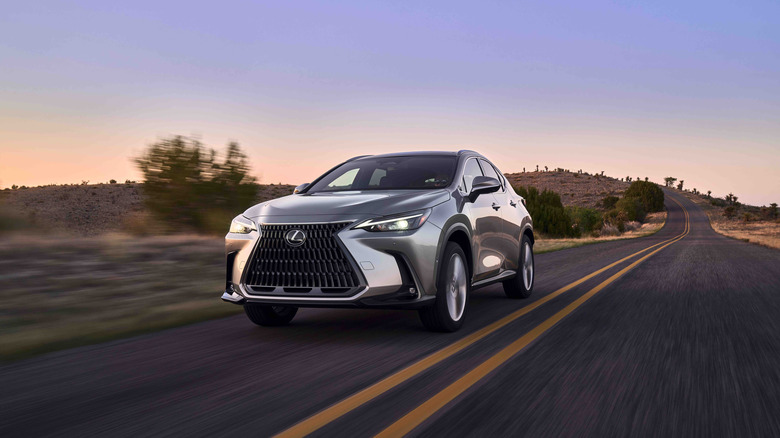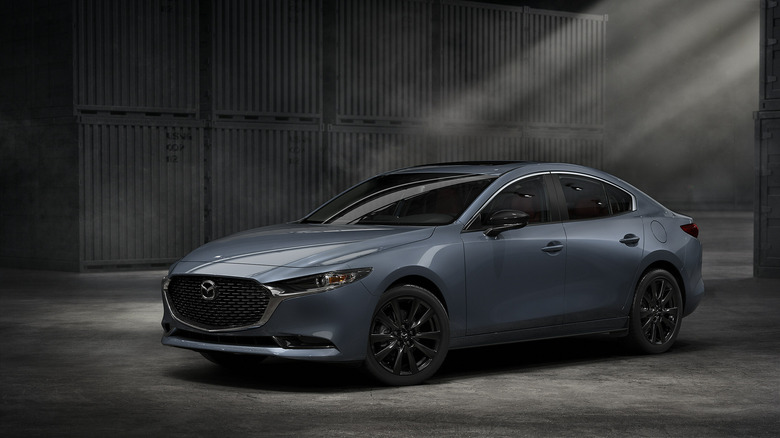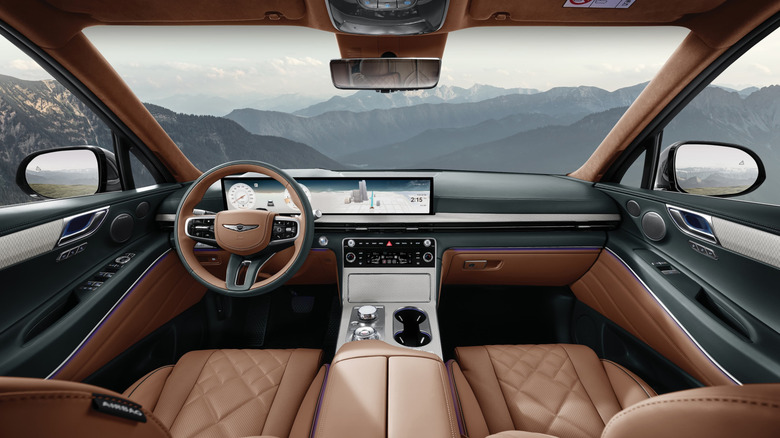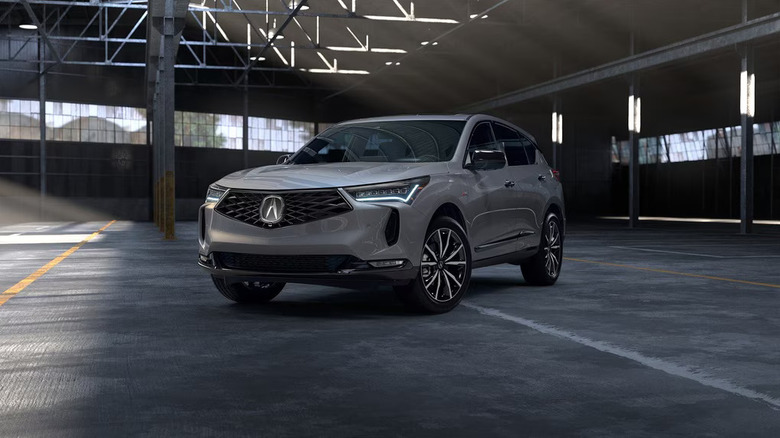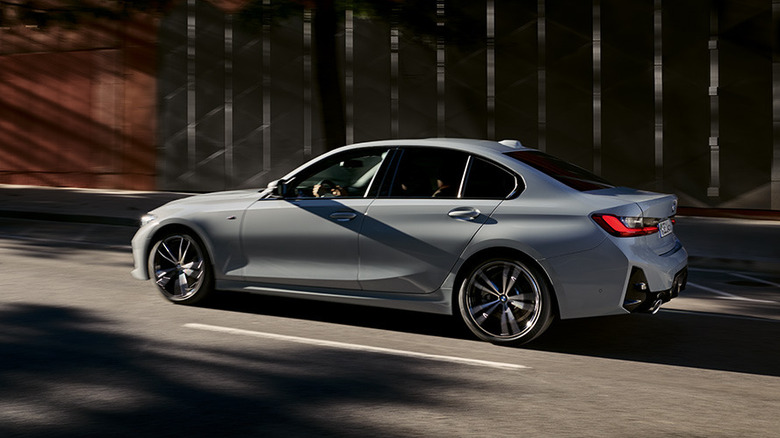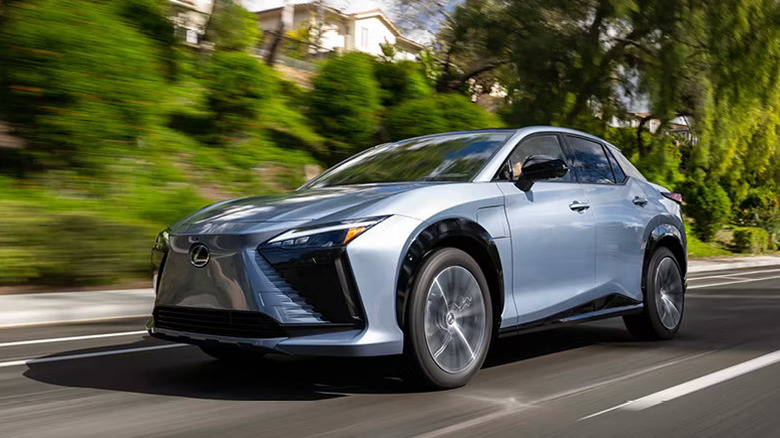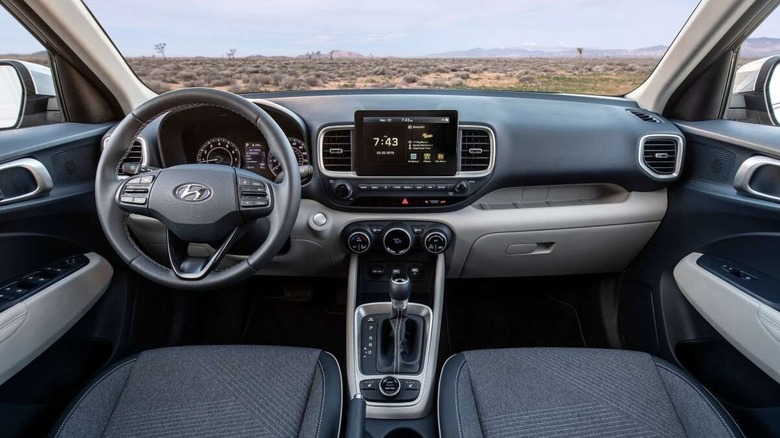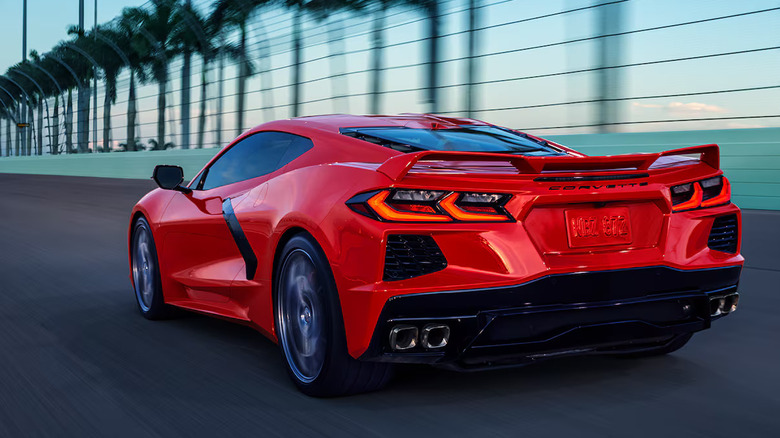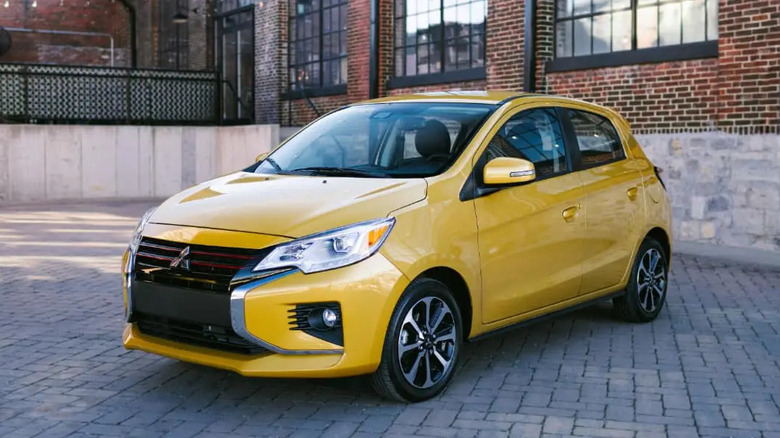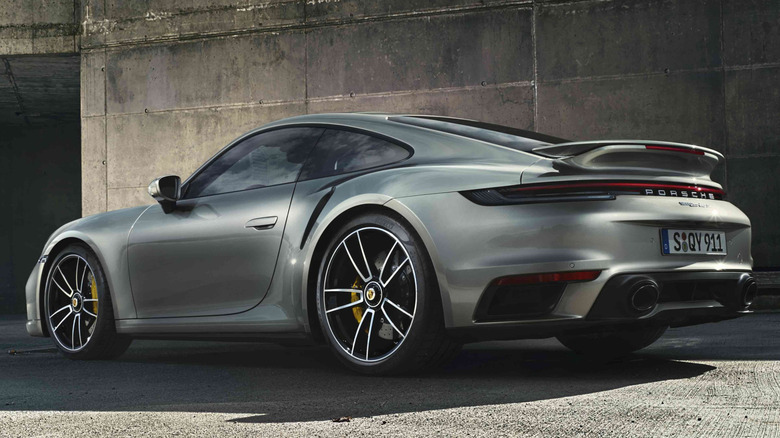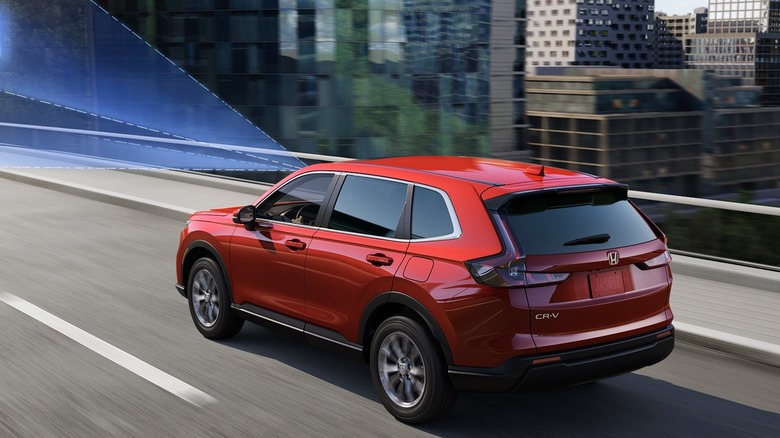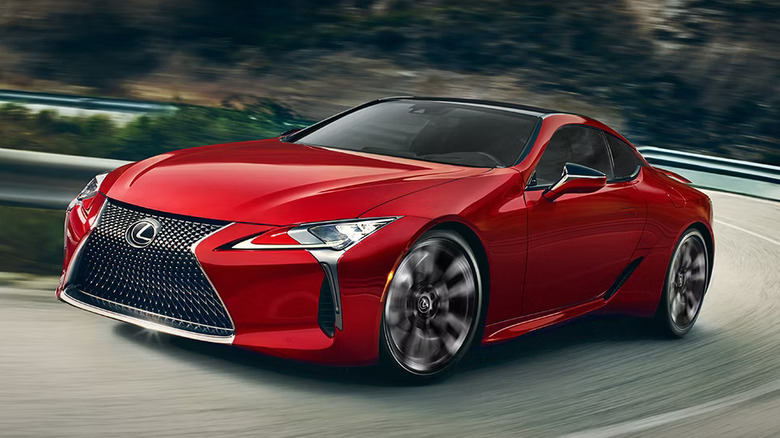5 Car Brands With The Best Safety Ratings (And 5 With The Worst)
When it comes to buying a new or used car, safety is likely the top priority for most consumers. Many things suggest safety, such as a long list of in-car features like lane departure warnings and airbags, but the true test is generally the crash test ratings a vehicle receives. Vehicles can vary widely in their crash test rankings, and while being from the same brand is no guarantee of consistency, there are some clear trends.
Looking at data from various safety organizations can offer some insight into which vehicle manufacturers offer safer vehicles overall. There are no guarantees when it comes to buying a vehicle, but some brands may be a safer bet, and others are best avoided. Next time you go shopping for a new vehicle, consider the car brands with the best safest ratings, and reconsider the ones with the worst — both in terms of official safety rankings and statistics based on accident data.
Here we've ranked the most and least safe cars, based on safety data as reported by the Insurance Institute for Highway Safety (IIHS) and National Highway Traffic Safety Administration (NHTSA), two highly esteemed organizations known for their safety reviews. You can learn more about our methodology following this list.
Best: Mazda
Mazda has some of the best safety ratings with both the NHTSA and IIHS. In 2024, a number of its vehicle models (including the Mazda3, CX-30, CX-5, CX-90 PHEV, and CX-90 MHEV) met the NHTSA's criteria for 5-star safety ratings. Some models are SUVs, which NHTSA and IIHS data suggests are generally safer than smaller cars, but Mazda does have some super-safe sedans in its lineup.
Mazda also ranked highly in IIHS safety rankings for 2024. Mazda made up eight of the IIHS' top safety picks, and all eight were not only top picks, but also plus picks. Earning a Top Safety Pick Plus rating requires vehicles to receive Acceptable or Good determinations in specific areas, with vehicles passing a newer safety test than the Top Safety Pick (no plus) selections.
The vehicles that IIHS gave Top Safety Pick Plus ratings to include different size vehicles, from the small car category (Mazda 3 hatchbacks and sedans) to small SUVs (CX-30 and CX-50) to midsize SUVS (CX-70, CX-70 PHEV, CX-90, and CX-90 PHEV).
Mazda made our list of brands with the best safety ratings based on the NHTSA and IIHS appraisals, but also because Mazda did not make another list — one that counts fatal accident rates based on vehicle information, based on NHTSA data organized by iSeeCars. Unlike other big-name brands, Mazda did not have a fatality rate more than two times the overall average. Still, there are some used Mazda models you should steer clear of, with the highest-rated models being the newest.
Best: Genesis
Genesis luxury cars are often mistaken for Bentleys, but they're actually made by Hyundai and many rank very highly for safety. For 2024, the NHTSA awarded multiple Genesis vehicles five-star safety ratings — the highest possible rank. Five-star-rated models include the G80, GV60, and GV70, though the electrified 2024 Genesis models were not yet rated.
The IIHS also awarded Genesis vehicles top safety rankings; eight 2024 Genesis vehicles were given IIHS' Top Safety Pick rankings, with only one missing out on the plus addition. Genesis stood out in the large luxury car category, with the Electrified G80, G80, and G90 earning recognition. The GV60 won the same award in the small SUV category, and three Genesis vehicles (Electrified GV70, GV70, and GV80) were awarded the Top Safety Pick Plus in the midsize luxury SUV category; only one, the GV70, missed the plus.
Genesis vehicles also did not have a fatal accident rate higher than two times the average, so did not appear on the list of deadliest vehicles we mentioned above. Of course, as safe as they apparently are, Genesis vehicles can also be expensive. The most affordable (new) model in 2025 — the G70 — starts at around $42,000. Interestingly, Hyundai does not perform nearly as well safety-wise as its luxury offshoot.
Best: Acura
As Honda's high-class sibling, Acura offers some luxurious models that hardly resemble the rest of the family of vehicles. The brand has an excellent reputation for safety with both the NHTSA and IIHS — far better than Honda itself, it turns out.
In the NHTSA's lineup, each 2024 Acura model received a five-star overall safety rating, according to the NHTSA search tool; the 2024 Acura RDX, MDX, and ZDX all received five stars overall. For IIHS rankings, three Acura models ranked as Top Safety Picks in 2024, with two earning the plus designation. The Integra Hatchback ranked in the small cars category, while the MDX and RDX earned awards in the midsize luxury SUV category. Ultimately, Acura's absence from iSeeCars' list of the most dangerous cars for drivers also means its fatal accident rate is less than two times the average overall.
Acura also has a history of earning high safety ratings; it had two Top Safety Picks with the IIHS in 2023 as well — the MDX and RDX seem to be good options for safe vehicle purchases. The brand even touts a commitment to safety on its website, with technology for collision mitigation, crash resistant materials, driver training, and more on its list.
Best: BMW
BMW is a well-known luxury vehicle brand, but do its safety stats stack up? According to both the NHTSA and IIHS, they do. BMW is one of the car brands with the best safety ratings, starting with the NHTSA's review of various models' safety features. For example, the BMW 3 Series, a sedan, earned a five-star rating from the NHTSA for the 2024 model year. Many 2024 BMWs are not rated by the NHTSA, but there is more good safety news from the IIHS, too.
In 2024, BMW earned Top Safety Pick ratings on numerous vehicles in its lineup. Five vehicles total made the rankings, with the 5-Series getting the Top Safety Pick in the large luxury car category and the X1 and X2 ranking in the small SUV category.
As far as BMW vehicles that are considered super-safe, the X3 is one of BMW's most reliable models ever built, and it was also an IIHS top safety pick for 2024. Both the X3 and X5 earned the Top Safety Pick Plus award for the midsize luxury SUV category.
When it comes to the data on fatal car crashes as reported by the NHTSA and reviewed by iSeeCars, BMW did not appear on any of the most dangerous cars lists. While that doesn't mean BMWs don't get involved in any accidents, it does mean that statistically speaking, they're are likely safer than some counterparts in the industry.
Best: Lexus
Toyota technically makes Lexus cars, but the luxury label might make the difference between passing safety ratings and top-tier rankings. While Toyota doesn't have the worst safety ratings, it also doesn't have the best, hence its absence from our list. But Lexus, like other luxury brands, offers many high-safety-rating vehicles.
Multiple 2024 Lexus models — including the ES 300H and RZ 450E — earn five-star safety ratings from the NHTSA. Lexus also ranked highly in the IIHS safety review for 2024. Five Lexus models earned Top Safety Pick ratings from the IIHS, including the RZ and UX in the small SUV category and three larger SUVs in the next category up. Only the NX received a Top Safety Pick Plus ranking, while the NX Plug-in Hybrid and RX were plain old Top Safety Picks.
2023 was also a great year for Lexus with the IIHS rankings; it earned six awards for vehicles like the ES350, RZ, UX, NX, NX Plug-in Hybrid, and RX.
The even better news, however, is that Lexus didn't rank at all in iSeeCars' review of fatal accidents. While a lack of a super-high death rate for a brand doesn't mean you're guaranteed to survive any crash, Lexus' strong safety rankings overall suggests that it's a very safe brand to choose. The trend of luxury vehicles earning higher safety rankings may mean a higher budget when buying a car, but it could also mean greater peace of mind.
Worst: Hyundai
Hyundai won nine Top Safety Pick awards from the IIHS in 2024, but that doesn't mean the brand is one of the safest. While models like the Elantra, Sonata, Tucson, and Palisade were all Top Safety Picks, Hyundai still has excessively high fatal crash rates, per NHTSA data.
According to the review of vehicle crash data performed by iSeeCars (based on NHTSA data), Hyundai was the fifth most dangerous vehicle in the lineup, with one of the highest fatal accident counts after Tesla, Kia, Buick, and Dodge. The Hyundai Venue was the most dangerous car of all in the data review, with an exceedingly high rate of occupant death compared to any other SUV. The Hyundai Kona was also deemed very dangerous, with an occupant death rate of 2.3 times the average (the Venue's death rate was 6.3 times the average).
Interestingly, Hyundai owns various other car brands, including Kia, Ioniq, and Genesis, with those brands — particularly Genesis — performing far better overall.
The NHTSA will be reviewing two Hyundai vehicles — the Palisade and Tucson — for its five-star rating testing in 2025, and since those are both SUVs, they may very well prove safer than the other SUVs in Hyundai's lineup. The 2024 Kona, after all, has a four-star overall safety rating. It's not abysmal, but higher death rates are not promising when buying a new (or new-ish) car.
Worst: Chevrolet
Chevrolet has said goodbye to its most recent Camaro, and it's not entirely surprising that Chevy is planning to fully remake the car. After all, it's one of the models that has a much higher passenger death rate than the overall average for all vehicles. And it's not the only one — other Chevrolet models have poor safety results according to then NHTSA data iSeeCars reviewed, as well as the IIHS' search tool.
For example, the IIHS suggests the Malibu has a higher driver death rate than comparable midsize cars from other brands. The Impala ranks poorly in the large car category, too. The Tahoe at least had fewer driver deaths than comparable vehicles, suggesting that perhaps Chevrolet's large SUVs aren't the worst safety-wise.
The Chevrolet Corvette was said to be the second most dangerous car overall, per iSeeCars, with an occupant fatality frequency nearly five times the average. Chevy Camaros didn't fare much better, with a fatality frequency around three times the average. While you may expect sports cars to have higher fatality rates than other vehicles, it's not promising for Chevrolet's safety profile that it also has an SUV with a rather high death rate.
Chevrolet's Trailblazer has an occupant fatality rate more than two times the average, making it the 12th most dangerous SUV in the data review. Worse, the Colorado is the third highest on the list for occupant fatalities among pickups, after the Nissan Frontier and Ford Ranger.
Worst: Mitsubishi
Mitsubishi's Mirage G4, one of the lowest horsepower and most affordable cars in the U.S., might be on many consumers' lists when considering a new car in 2025. Unfortunately, it had the highest driver death rate of any car between 2018 and 2021, according to IIHS data. Given that the Mirage is a minicar, it's perhaps more understandable that the vehicle fares worse in real-world safety tests.
The Mirage is the third most dangerous vehicle, per iSeeCars' review of NHTSA data, with both the Mirage hatchback and Mirage G4 sedan having very high occupant fatality rates. The Mirage's rate was 4.8 times the average, while the G4's was 3.6 times. Yet it wasn't just the Mirage that fared poorly in some rankings.
Another Mitsubishi, the Outlander Sport, had a very high occupant fatality rate in the Boston, Massachusetts metro area, although its rate was not high overall. In the Boston area, specifically, the Outlander Sport had a fatal accident rate of 11.9 times higher than average.
All things considered, if you avoid the Mirage and Outlander Sport, Mitsubishi may be a smidge safer than what these statistics suggest. By the law of averages though, the two poorly performing vehicles drag all of Mitsubishi's ratings down, and there are many safer car brands on the market.
Worst: Porsche
While an earlier Porsche model (the 911 turned 930) was dubbed the Widowmaker, it seems newer models have a similar reputation. The Porsche 911 was one of the most dangerous cars in iSeeCars' review of NHTSA data; the sporty car had a fatal accident rate of more than 4.6 times the average for model years between 2018 and 2022.
The 911 ranked as the fourth deadliest vehicle in iSeeCars' rankings, but of course, most consumers shopping for such a sports vehicle are likely not concerned with safety ratings overall. That said, if safety is at the top of your mind, there are other fun and sporty cars with much better ratings, like BMW or Lexus.
However, there is one caveat to the data, and that's the fact that even the "deadliest" vehicles, as ranked by iSeeCars, are often highly rated for safety by the NHTSA or IIHS, if not both. Thus, there's more to learn from the data, as iSeeCars expert analyst Karl Brauer notes in the company's study, saying, "The models on this list likely reflect a combination of driver behavior and driving conditions, leading to increased crashes and fatalities."
While driver habits appear to factor into crash rates — because why wouldn't they? — the fact remains that many other vehicles have much lower occupant death rates than others. Given a chance to lower your risk of a fatal accident, you may very well buy a car with a better track record crash-wise.
Worst: Honda
Despite being one of the best-selling vehicle brands on the market, Honda is one of the worst-rated when it comes to occupant death rates. Like other big-name brands, Honda has earned plenty of safety awards, including eight Top Safety Picks with IIHS in 2024. Yet some Honda vehicles have higher-than-average occupant death rates.
For example, the Honda CR-V Hybrid has a poor safety reputation; it had a fatal accident rate of over 4.6 times the average in iSeeCars' review of NHTSA data. In contrast, the Honda CR-V 4WD had relatively low driver death rates, making it a safer pick. The Honda Civic also has a higher-than-average driver death rate, with other brands having far lower rates yet still having too high of a rate to rank as one of the best on our list.
Given the death rate distribution of Honda's cars, from relatively low to super high, it's hard to suggest that Honda has the best safety ratings of all the brands we looked at. While that doesn't mean every Honda is a death trap (or that any of them are), for optimum expected safety, we would recommend looking at the brands higher on our list.
Methodology
Our methodology for recommending the car brands with the best safety ratings started with examining vehicle safety ratings from both the NHTSA (a five-star rating system) and the IIHS (Top Safety Picks and Top Safety Pick Plus status being the highest 'awards'). From there, we nixed any vehicle brand that appeared on either NHTSA or IIHS death rate reports with higher-than-average numbers.
The worst safety rating brands are those that receive poor marks from the NHTSA and/or IIHS and have higher than average fatal accident rates. Accident rates vary, as discussed, and may include driver death rates (IIHS data) and/or occupant fatalities (NHTSA/iSeeCars data). All "worst" are brands with models that have more than four times the average fatal accident rate.
As noted in our discussion of the statistics, higher occupant death rates does not negate the safety ratings as determined by the NHTSA or IIHS. Higher death rates also does not mean a brand or model is inherently dangerous. Given the relative lack of information available about vehicle fatalities per brand, drivers looking for the best odds at a safe drive will probably want to look at vehicles with high safety rankings and low death rates.
